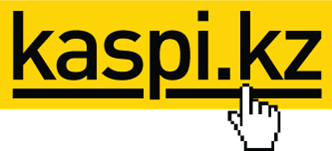Educational program
Information and Software Engineering

Occupation as masters in the preparation of information and software engineering is the industrial production of software for information systems for various purposes.
After the end of the study subjects of the educational program "Information and Software Engineering" students must:
Know and understand:
- methods of research objects of professional activity on the basis of general trends in the development of software engineering;
- ways to optimize the design and technological solutions to ensure the quality of objects of professional activity;
- methods of organization of research work;
- methods of planning, management and monitoring compliance;
be able to:
- To evaluate the degree of difficulty, risk, budget and time for project implementation, monitoring work schedule;
- Design activities in the professional sphere on the basis of a systematic approach, the construction and use of models, their implementation of qualitative and quantitative analysis;
- Create technical specifications and lead the development of software;
own :
- methods of design of professional activity;
- techniques of modern technology development of software systems using automated systems planning and management , quality control software products developed ;
- ways of planning and management of software development process ;
- ways to develop technical specifications and feasibility studies;
- the organization of the team of software developers, reacting with subcontractors.
Catalog of disciplines of the educational program
The catalogue of disciplines of the educational program contains description of every discipline individually with pointing of prerequisites and postrequisites, amount of credits, types of employments, information about the heads of the program.
Basic disciplines
Алгоритмдердіталдау / Анализ алгоритмов/Analysis of algorithms – 2 credits
Prerequisites: Algorithmization and programming languages
Brief content of the course: Basic algorithmic analysis . What is the analysis of algorithms. Complexity in memory. Complexity time . The growth rate . Classification of growth rates . Asymptotic complexity . Complexity in the worst case . Average complexity . Algorithmic solvability and unsolvability . Comparison of different formalized the notion of " algorithm ." Abstracts Church , Turing , Markov . Encoding of Turing machines . Algorithmic solvability and unsolvability . Examples algorithmically solvable and unsolvable problems. Algorithmic problems of self , applicability , stop their algorithmic unsolvability . Soluble and enumerable sets . Numbering algorithms. Kleene's theorem and Rice . Polynomial complexity . The time complexity of deterministic Turing machines
Types of the lessons: practical
Program leader: Baymankulov A.T.
Шешімдердіқабылдаудыңматематикалықмодельдері / Математические модели принятия решений / Mathematical models of decision-making – 2 credits
Prerequisites: Models and methods
Brief content of the course: Basic concepts of static optimization problem . Instrumental variables and parameters of the mathematical model. Admissible set . Criterion for selecting solutions and objective function . The level lines of the objective function . Formulation of static deterministic optimization problem. Uncertainty in the parameters and its influence on the decision . Global extremum and local extrema. Extremes in internal and boundary points of the feasible set . Reasons for the lack of optimal solutions . Formulation of the problem of linear programming ( LP). Examples of LP problems . Standard (normal ) and the canonical form of representation of the LP problem and to minimize them. Properties of the feasible set and the optimal solution to the LP . Basic understanding of the methods of solving LP problems , based on the directed search of vertices ( the simplex method, etc. ) . Dual linear programming problem. Reciprocity duality. Duality theorem . Interpretation of dual variables . Sensitivity analysis of the optimal solution to the parameters of a linear programming problem . Some special linear programming problem (transport , production and transport , etc.). The overall objective nonlinear programming (NLP) . NLP problem and the classical problem of constrained optimization . Lagrange function for the problem of NLP. Saddle point of the Lagrange function . Sufficient condition for optimality in the general problem of NLP. Kuhn-Tucker conditions .
Types of the lessons: practical
Program leader: Aytmuhambetov A.A.
Profiling disciplines
Деректердіқысужәнеұғымы / Представление и сжатие данных / Representation and data compression – 3 credits
Prerequisites: Informatics
Brief content of the course: Information and information processes . Approaches to the concept of information and measurement information. Information objects of various kinds. Versatility discrete ( digital ) representation of information. Presentation of information in the binary system . Discrete (digital ) representation of text, graphics , audio and video information . Presenting information in different number systems. Basic information processes and their implementation with the help of computers : processing, storage, retrieval and transmission of information . Storage of information objects of various kinds on various digital media . Determination of amounts of various media . Archive information. Expanding the use of trees in data archiving . Prefix codes . Application of extensions to prefix codes . Characteristics of the splay-prefix algorithm . Arithmetic codes. Application extension to arithmetic codes. Characteristics of arithmetic codes .
Types of the lessons: practical
Program leader: Bevz I.A.
Бағдарламалықжүйелердіңинтерфейстері / Интерфейсы программных систем/The interface of software systems – 3 credits
Prerequisites: Interfaces of computer systems
Brief content of the course: The human factor in the development of the interface. Users as an integrated part of computer systems. Models and metaphors . Concepts and relationship . Mental model . Properties of mental models . Mental models of different participants in the development and use of software systems. Diversification users. Diversification criteria . Concept of usability. (ISO, Booth, Nielsen). The importance of usability testing. Basic methods usability testing. Advantages and disadvantages of methods. Scope methods. Features of the resulting estimates . Interpretation ratings usability testing. Verification results of usability testing. Usability testing the accuracy of the results . Comparative usability testing as a method of quality evaluation. The main types of user interfaces. Features of their design. Match the type of interface software system user mental model . Match the user interface model. Compliance capabilities of user memory . Semantics style interface.
Types of the lessons: practical
Program leader: Ivanova I.V.
Біліминженериясы / Инженерия знаний / Knowledge Engineering – 3 credits
Prerequisites: Programming in a high-level, object-oriented programming.
Brief content of the course: Introduction to engineering knowledge. Subject and method of knowledge engineering . Basic knowledge representation models . A logical model of knowledge representation . First-order predicate calculus . Deductive reasoning in the logical models. Forward, backward and mixed chaining . Method resolution . Using the method of resolution for proving theorems in the propositional calculus and first order logic. Network model . Notion of semantic network. Classification of semantic networks. The main types of relationships in the network. Frames. System frames. Knowledge representation based on frames. Production model . Formal and program production systems . Product structure of a software system . Cycle of production systems . Conflicting set of rules . Mechanisms of activation rules. Simple and control systems products. Knowledge representation based productions. Representation of fuzzy knowledge . The notion of linguistic variable . Fuzzy sets . Basic operations on fuzzy sets . Fuzzy relations . Using fuzzy logic systems based on knowledge. Fuzzy output. Shortliff’s scheme . Visual representation of knowledge. Intellectual and conceptual maps .
Types of the lessons: practical
Program leader: Salykova O.S.
ГАЖ жасауқұралдары / Инструментарий разработки ГИС / GIS development toolkit – 3 credits
Prerequisites: Programming in high level language
Brief content of the course: Introduction to GIS. Features of the organization of data in a GIS . Linear objects . Interaction between the coordinate data. Attribute data . Essence of GIS. Development history of geographic information systems . General classification of GIS. GIS tools . Vector and raster models . Structural model . General classification GIS. GIS tools . GIS viewers , cartographic reference system vectorizer raster map images . Creating and editing electronic maps using GIS "Panorama" . Appointment of common features editor vector map . How to create and update electronic charts . Structure Editor e-cards . Interface. Management . Functionality . Create subobject . Editing object. Setting editing session e-cards . Technology object editing electronic card ( choice - Editing - write) . Using layouts kinds of objects created . Methods of application of the object on the electronic map . Allocation methods ( group ) objects. Collaborative editing of selected objects .
Types of the lessons: practical
Program leader: Salykova O.S.
Оптимизациялауәдістержәнесайттардыңалғабасуы / Методы оптимизации и продвижения сайтов / Methods of optimization and site promotion – 3 credits
Prerequisites: Web-programming
Brief content of the course: Market SEO, history, development , promotion methods and algorithms . Website promotion methods ( technology , an overview of current and legacy technologies ) . Semantic core of the site , the audience needs clients. Request types (commercial, transactional , informational , etc.). Kind of queries: high, mid , low, their frequency and competitiveness . Determination of concurrent queries and their cost. Overview of professional terms in SEO. Optimizing your site . Working with redirects , doubles , mirrors , robots.txt. Distribution requests , allocation landing pages. Text page optimization . Definition CNC use. Site Indexing . Sanctions search engines (history , overview, the current reality ) . Conclusion site under sanctions. Insurance Website by sanctions . Reference ranging notion indicators TIC and PR. Schemes to promote a website (words or traffic). The notion of an anchor file compilation , use. Working with reference brokers. Getting inbound links ( purchased, permanent , articles, natural) . Catalogues sites (UC , DMOZ). Young and old sites (family nucleus , timeline) . Working with the current algorithm (MatrixNet, ranking function ) . Work with automated systems of promotion (WebEffector, Rookee, Seopult). Satellites , purpose: to create and use . Basics of usability. User behavior on the site. Work with services statistics, analysis of indicators ( views , failures , etc.). Achieving these goals site users . Hold users on the site. Conversion , ways of enhancing it .
Types of the lessons: practical
Program leader: Ismailov A.O.

